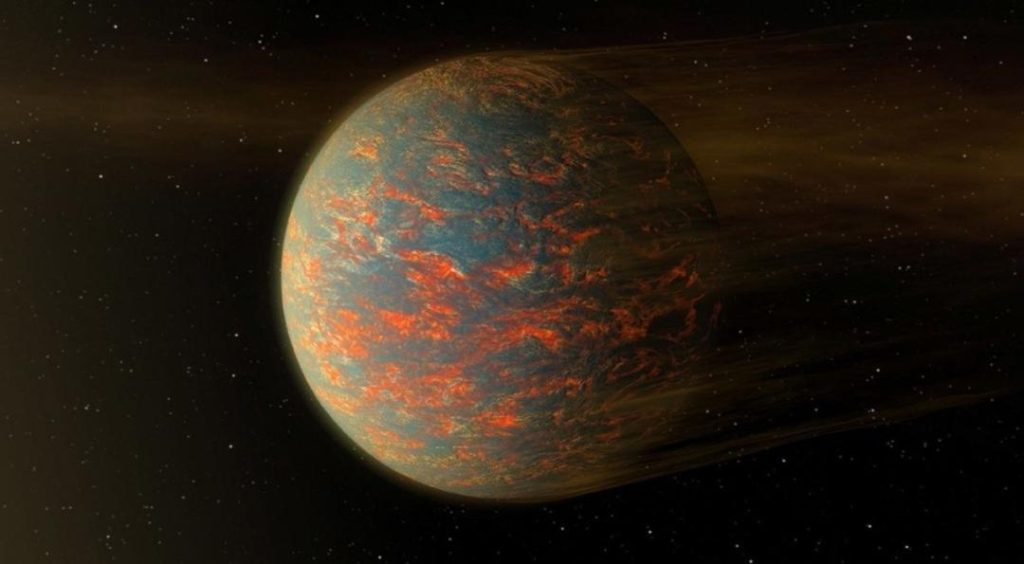
Newly-Discovered Super-Earth Heats Up & Freezes Every 300 Days
In a groundbreaking discovery, astronomers have identified a newly-discovered “super-Earth” orbiting a Sun-like star just 20 light-years from our planet. This remarkable planet, which is classified as a “super-Earth”, is unlike any other known planet in our solar system, experiencing extreme heat for the first part of its year and freezing for the rest of the days. This remarkable phenomenon occurs roughly every 300 days, making it a truly unique celestial body.
A planet is considered a “super-Earth” if it is larger than our home planet, but smaller than the gas giants Neptune and Uranus. This newly-discovered super-Earth, designated as K2-141b, orbits its star in an oval shape, which is responsible for its extreme climate fluctuations. The planet’s orbit is tilted at an angle of about 30 degrees, causing it to experience a prolonged period of intense heat during its close approaches to the star, followed by a prolonged period of freezing temperatures as it moves farther away.
The discovery of K2-141b was made using the Kepler space telescope, which has been instrumental in detecting thousands of exoplanets since its launch in 2009. The team of astronomers, led by Dr. Thomas Barclay of NASA’s Ames Research Center, used a combination of data from the Kepler telescope and follow-up observations from other ground-based telescopes to confirm the existence of the super-Earth.
The orbital pattern of K2-141b is unlike anything seen before in our solar system. The planet’s close approaches to its star cause the surface temperature to soar to as high as 3,000 degrees Fahrenheit (1,600 degrees Celsius), making it hotter than the surface of Venus, which is the hottest planet in our solar system. This intense heat would be catastrophic for any known forms of life, but it’s possible that some hardy organisms could thrive in the cooler temperatures that exist at the planet’s poles.
On the other hand, when K2-141b moves farther away from its star, the surface temperature drops to as low as -400 degrees Fahrenheit (-240 degrees Celsius), making it colder than the coldest temperatures seen on Neptune, the eighth planet from the Sun. This extreme cold would be challenging for any life forms that might exist on the planet to survive, but it’s possible that some forms of life could adapt to these conditions.
The discovery of K2-141b has significant implications for our understanding of exoplanetary climates and the potential for life beyond Earth. The planet’s unique orbital pattern, which is caused by its oval-shaped orbit, is a reminder of the vast diversity of planetary systems that exist in the universe.
“This new discovery highlights the complexity and diversity of planetary systems,” said Dr. Barclay. “The extreme climate fluctuations on K2-141b are a reminder that we’re still learning about the many ways that planets can form and evolve in the universe.”
The discovery of K2-141b is also a testament to the power of space-based telescopes, which have enabled scientists to detect exoplanets that would be difficult or impossible to detect using ground-based telescopes. The Kepler space telescope, which was launched in 2009, has been instrumental in detecting thousands of exoplanets, and its successor, the Transiting Exoplanet Survey Satellite (TESS), is expected to discover even more exoplanets in the coming years.
In conclusion, the discovery of K2-141b, a newly-discovered “super-Earth” that heats up and freezes every 300 days, is a significant breakthrough in the field of exoplanetary science. The planet’s unique orbital pattern, which causes extreme climate fluctuations, is a reminder of the vast diversity of planetary systems that exist in the universe, and it highlights the importance of continued exploration and research into the nature of exoplanets and their potential for supporting life.
Source:






